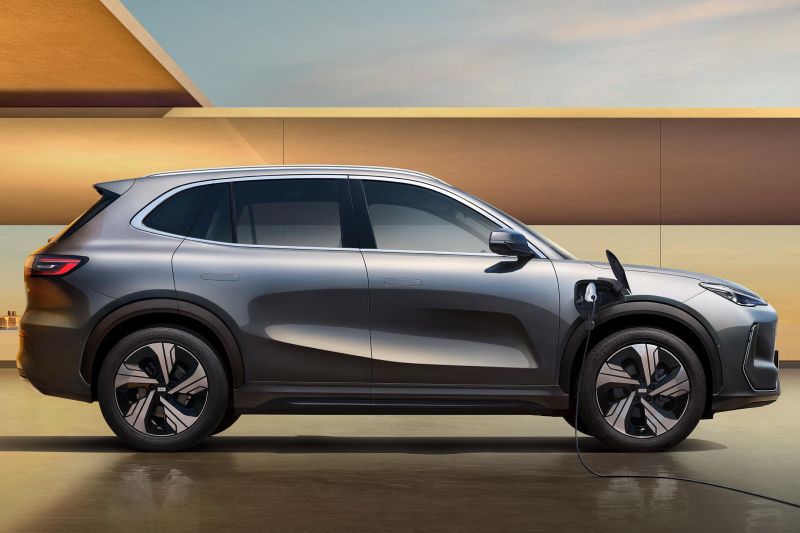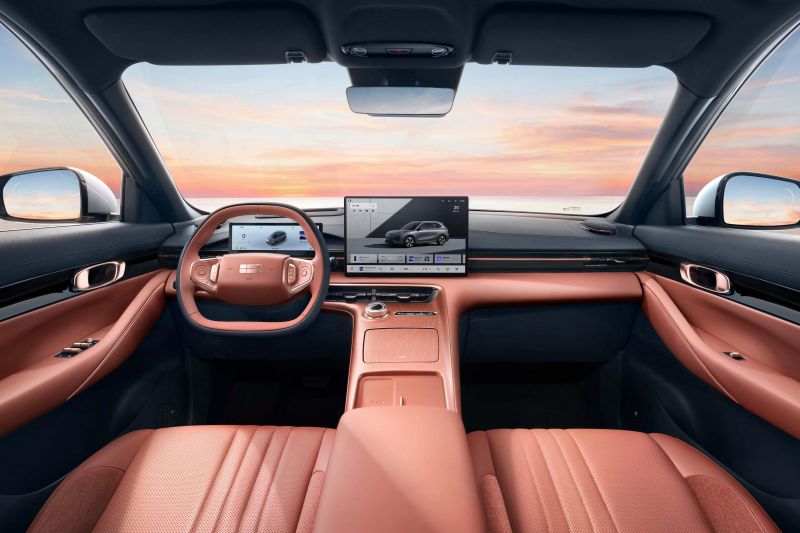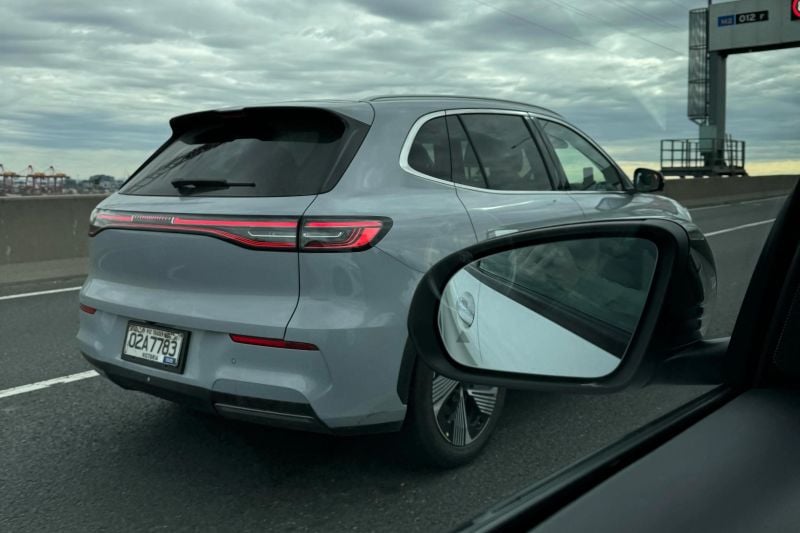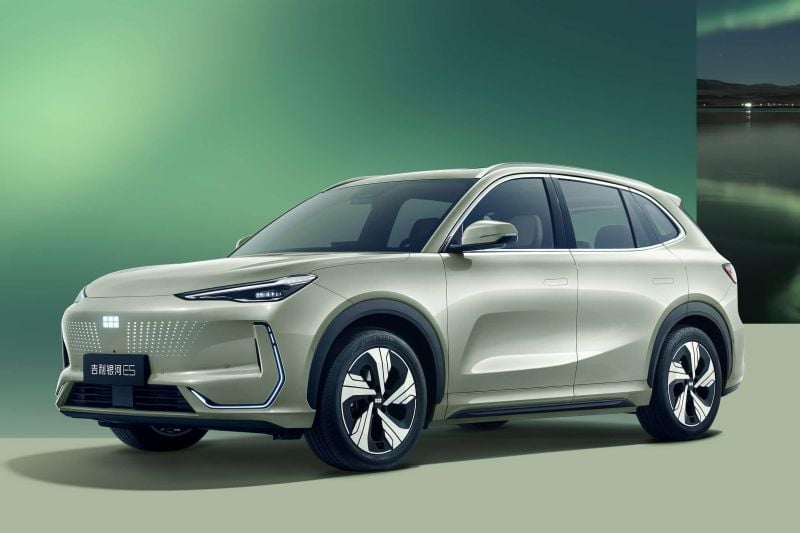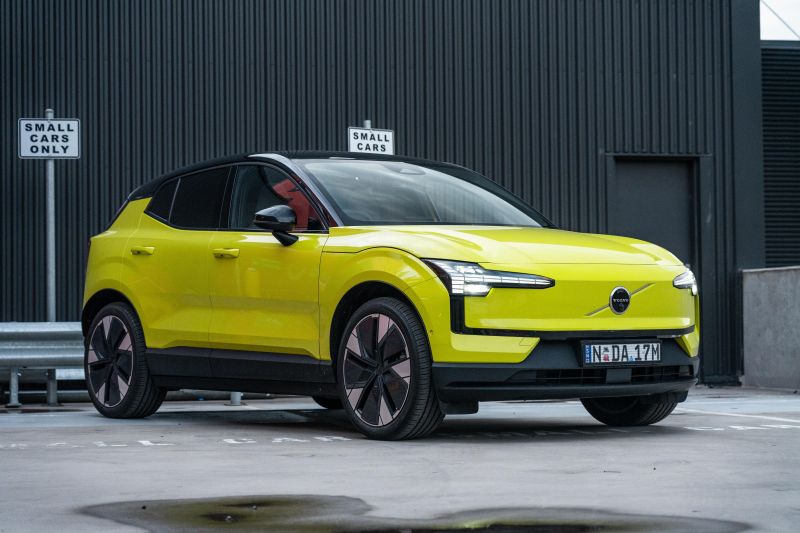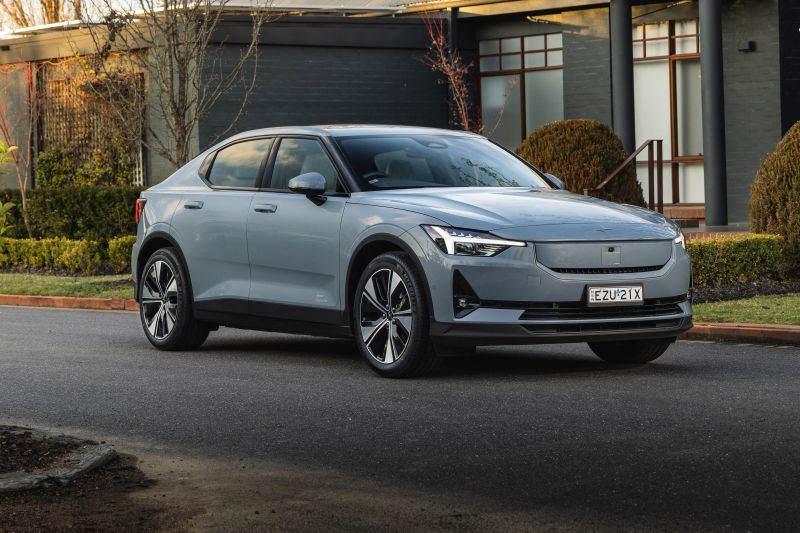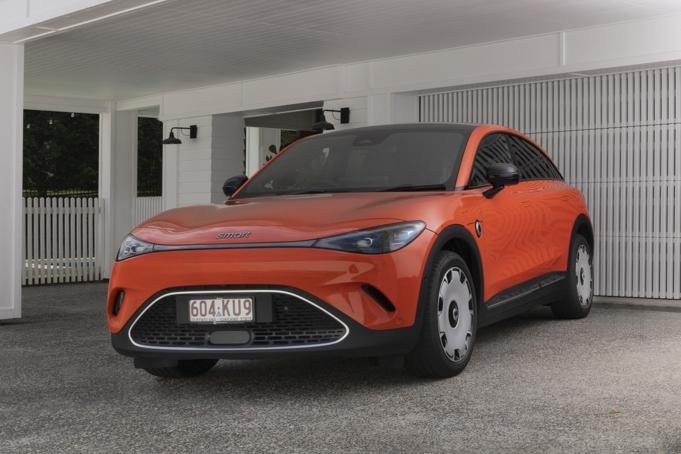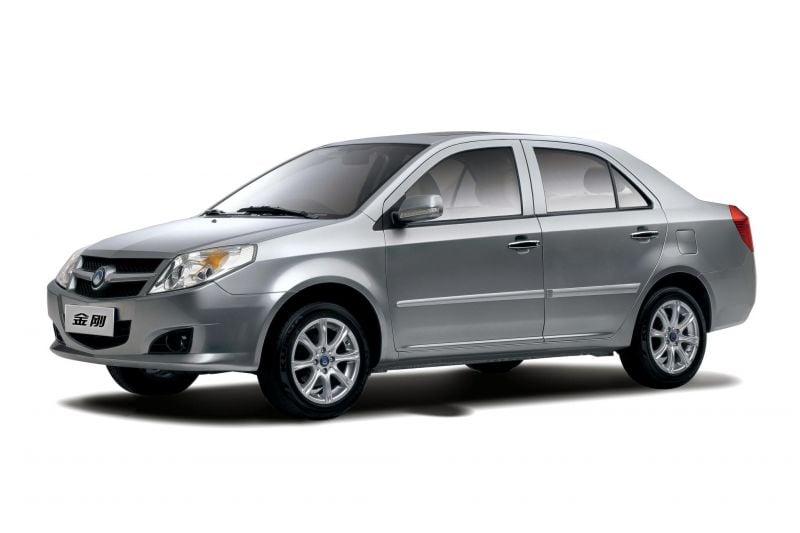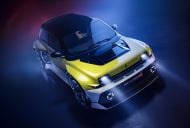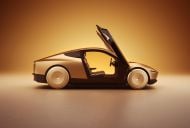Chinese automotive giant Geely already sells cars in Australia through its Lotus, Polestar and Volvo brands, but now it’s bringing its namesake brand.
The company has confirmed it’ll bring its new Geely EX5 to Australia, a mid-sized electric SUV that could battle the likes of the BYD Atto 3 and Tesla Model Y.
The EX5 has been developed simultaneously in left- and right-hand drive, and will spearhead Geely Auto’s launch into markets such as Australia, Norway and Thailand.
As to when Geely will arrive here, the company has only said that it will “soon be introduced in Australia”.
100s of new car deals are available through CarExpert right now. Get the experts on your side and score a great deal. Browse now.
Geely revealed the global EX5 at Automechanika Frankfurt, where it was exhibited alongside the rear-wheel drive Xingyuan electric city SUV and the E8 large sedan. It’s unclear if these are also bound for right-hand drive markets.
The EX5 is underpinned by the Geely Electric Architecture, riding on MacPherson strut front and multi-link independent rear suspension.
While specifications for the global EX5 have yet to be revealed, a look at the Chinese-market model – sold as the Galaxy E5 – reveals the SUV is powered by a 160kW/320Nm electric motor.
Geely says it uses the brand’s latest Short Blade Battery. Chinese-market specifications shows there’s a choice of 49.52kWh or 60.22kWh lithium iron phosphate (LFP) units, with claimed range of between 440km and 530km on the CLTC cycle.
The EX5 measures 4615mm long, 1901mm wide and 1670mm tall on a 2750mm wheelbase. That puts it roughly between a BYD Atto 3 and a Tesla Model Y in size.
While it has a fairly conventional SUV shape, Geely says it has a drag coefficient of just 0.269.
Inside, Geely says it has “flexible seating options” and the brand’s “Half More” storage concept, which it claims results in 50 per cent more storage capacity than the industry average.
It achieves this through the use of 33 separate storage spaces, including sliding drawers under the rear seat.
In China, the E5 is available with power-adjustable, heated, ventilated and massaging front seats, a 15.4-inch infotainment touchscreen, a 10.2-inch digital instrument cluster, a head-up display, a power tailgate, and a 16-speaker sound system.
There are also what Geely calls Marshmallow Series Chairs with “5+1 cushions” with “an extra layer of zero-sense relief”, according to the translated official site.
The suite of available active safety technology includes Intelligent Cruise Assist, blind-spot monitoring, lane-keep assist, rear cross-traffic alert, and traffic sign recognition.
Prices in China range from 112,800 to 148,800 yuan (~A$23,800-$31,400), though introductory offers slashed a few thousand off the bottom line.
We don’t expect the EX5 to be quite that cheap in Australia.
For context, the BYD Yuan Plus, known here as the Atto 3, is priced similarly to the Chinese-market E5 range. It’s priced between 119,800 and 147,800 yuan (~A$25,300 to $31,200) in China, but between $44,499 and $47,499 before on-road costs in Australia
The Geely brand’s Australian return was first indicated in May with a job posting on LinkedIn for a national marketing director who will be responsible for “the brand strategy of Geely” and “new Geely brand building”.
Zhejiang Geely Holding Group has also recently filed trademarks pointing to the launch of the Geely Auto brand, while the EX5 was recently spied testing here.
It’s unclear if Geely will be an EV-only brand, as it offers a wide range of combustion-powered vehicles in China and various global markets.
It’s also unclear whether the company will sell the RD6 electric ute from fledgling brand Radar Auto (aka Riddara) as a Geely – or if that’ll be introduced as yet another standalone brand here.
The Geely Auto brand includes everything from an electric micro car, the Panda Mini, all the way up to the Kia Sorento-sized, petrol-powered Haoyue three-row SUV, known as the Okavango outside of China.
Some of these vehicles are already produced in right-hand drive. The Okavango, for example, is produced in right-hand drive in Malaysia, where it’s sold as the Proton X90.
Many Geely vehicles, including the Okavango, the Xingyue (aka Tugella), and the Xingyue L (aka Monjaro), use the Compact Modular Architecture (CMA) underpinnings of the Volvo XC40 and Polestar 2.
Geely has previously confirmed it plans to develop more right-hand drive models as it looks to expand its global footprint.
“2024 marks a year where Geely intensifies its market presence, from steadfast ventures in core markets to new frontiers like Latin America, Central Asia, ASEAN, and Pan-Europe,” it said in a release earlier this year.
The global expansion of the brand is occurring simultaneously with the rollout of Zeekr to various markets, including ours.
The young, EV-only brand is expected here before the end of 2024, and is pitching itself as a more premium brand.
Preliminary pricing of its X SUV puts it in the same ballpark as the related Volvo EX30.
That leaves the Geely brand to potentially slot in underneath Zeekr, Volvo and Polestar as a more mass-market brand. Another brand thrown into the mix is Smart, which has launched here as an EV-only brand.
The Geely brand has had a presence in Australia before.
In 2009, Western Australian car dealer John Hughes announced plans to bring the Geely MK sedan and hatch to Australia.
These ended up being sold exclusively in Western Australia. Hamstringing the brand’s growth was the absence of electronic stability control in the MK, which was mandated shortly after its launch.
The MK was also swept up in an asbestos recall that also affected Great Wall and Chery. While the MK’s base price was slashed to a market-leading $8999 drive-away, it couldn’t save the brand here.







